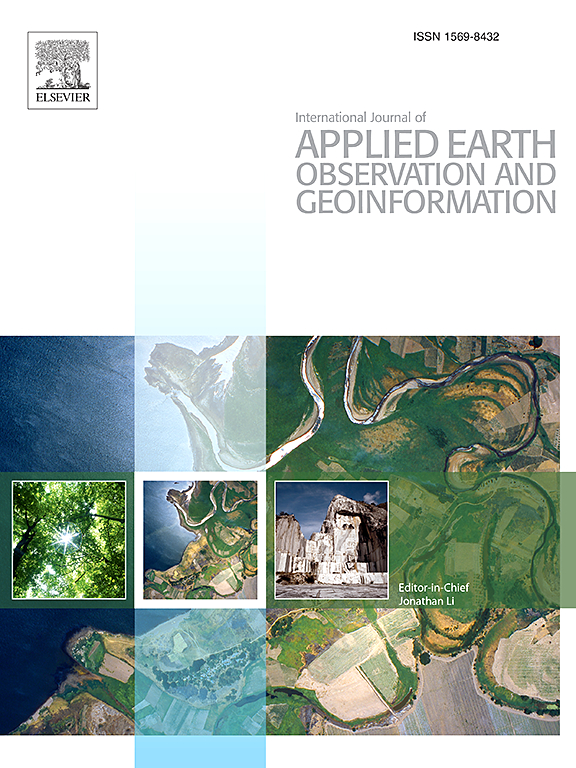PlaceField2BVec: A bionic geospatial location encoding method for hierarchical temporal memory model
IF 7.6
Q1 REMOTE SENSING
International journal of applied earth observation and geoinformation : ITC journal
Pub Date : 2025-02-01
DOI:10.1016/j.jag.2025.104402
引用次数: 0
Abstract
Encoding geospatial location is a fundamental problem for geospatial artificial intelligence (GeoAI) research. In recent years, some methods (such as Place2Vec, Space2Vec, and Sphere2Vec) were proposed to encode geospatial point as a high-dimensional vector. However, all these geospatial location encoders were designed to generate a real number vector. So, when applied to some of the brain-inspired neural networks, such as Hierarchical Temporal Memory (HTM), which required the input of a binary vector, the existing methods failed. To solve the problem, based on the research from neuroscience about place cell, we proposed a new geospatial location encoding method called PlaceField2BVec. The method used the place field model to encode a location. The place field was represented by the summation of four Gaussian functions, allowing it to be stretched or divided into multiple fields as the geospatial space expanded. Then we created an HTM and devised an experiment that simulated rats moving on tables of varying sizes. The moving trajectories were encoded by PlaceField2BVec and input to the HTM. After training, we found that the artificial neurons of HTM formed a place field similar to those of hippocampal neurons in the rat brain and the distribution patterns of the place field from the two kinds of neurons were consistent. At last, our method was compared with existing Space2BVec and Buffer2BVec in terms of location prediction accuracy and to demonstrate the robustness of the binary vector encoding methods, two brain-inspired artificial neural networks— HTM and BinaryLSTM were used. The result showed that, for HTM, in smaller geospatial space the PlaceField2BVec and Buffer2BVec had about the same accuracy on average but the highest accuracy of PlaceField2BVec is 100 %; when the geospatial space extended, our method had the highest accuracy and the average accuracy of PlaceField2BVec, Space2BVec, and Buffer2BVec is 83.9 %, 25.2 % and 69.7 % after 20 times’ training. For BinaryLSTM, PlaceField2BVec always had the highest accuracy in location prediction although the accuracy decreased as the space extended. Our research can be utilized for machine self-localization, navigation, and location-related GeoAI applications, and it also contributes to the theory of cognitive maps.
求助全文
约1分钟内获得全文
求助全文
来源期刊

International journal of applied earth observation and geoinformation : ITC journal
Global and Planetary Change, Management, Monitoring, Policy and Law, Earth-Surface Processes, Computers in Earth Sciences
CiteScore
12.00
自引率
0.00%
发文量
0
审稿时长
77 days
期刊介绍:
The International Journal of Applied Earth Observation and Geoinformation publishes original papers that utilize earth observation data for natural resource and environmental inventory and management. These data primarily originate from remote sensing platforms, including satellites and aircraft, supplemented by surface and subsurface measurements. Addressing natural resources such as forests, agricultural land, soils, and water, as well as environmental concerns like biodiversity, land degradation, and hazards, the journal explores conceptual and data-driven approaches. It covers geoinformation themes like capturing, databasing, visualization, interpretation, data quality, and spatial uncertainty.
 求助内容:
求助内容: 应助结果提醒方式:
应助结果提醒方式:


